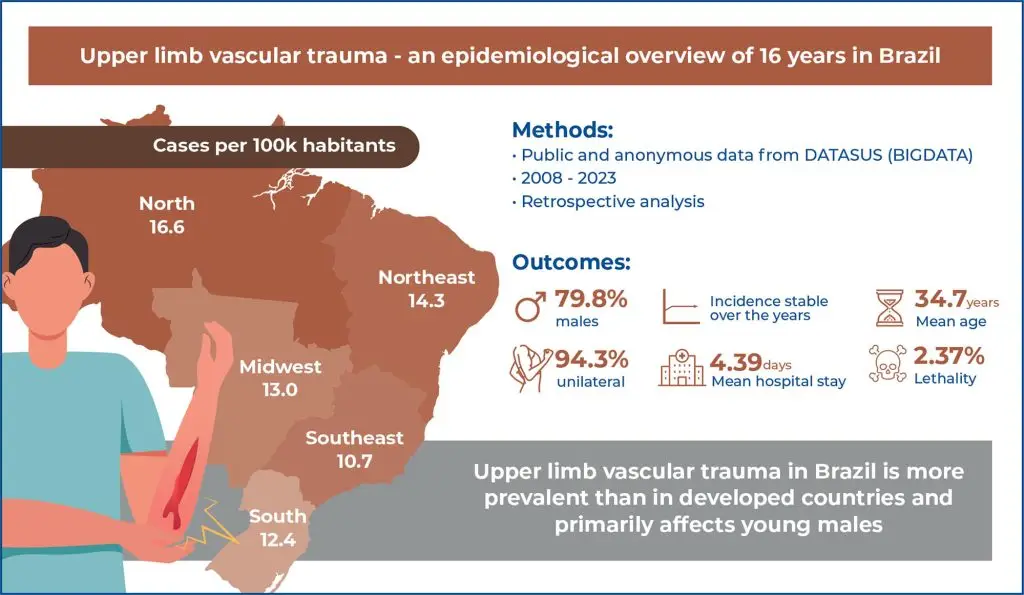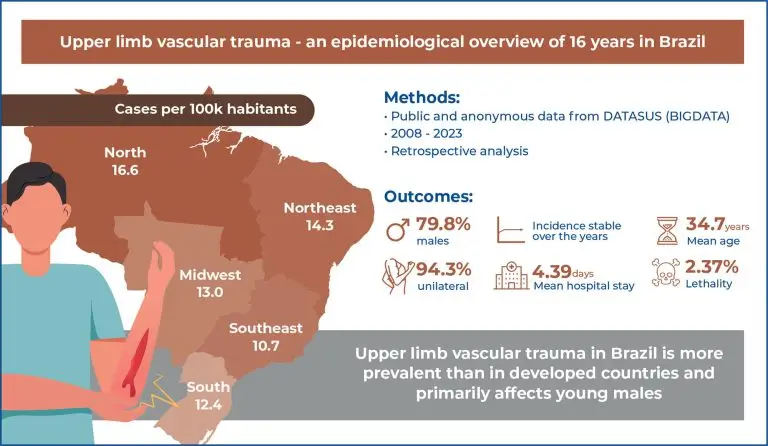einstein (São Paulo). 03/out/2025;23:eAO1339.
Nationwide epidemiological analysis of surgically treated upper limb vascular trauma over 16 years in Brazil
DOI: 10.31744/einstein_journal/2025AO1339
Highlights
■ Brazil had a higher upper limb vascular trauma incidence than the US, remaining stable over the years.
■ The region with the highest proportion of cases was the North, followed by the Southeast.
■ The most affected population was young men, with a lethality of 2.37%, comparable to that globally.
■ Most patients did not require intensive care (92.8%), and the average hospital stay was 4.39 days.
ABSTRACT
Objective:
To evaluate the epidemiology of upper limb vascular trauma across Brazil and evaluate the incidence rates, demographic characteristics, lethality, days of hospitalization, and related healthcare costs.
Methods:
This retrospective analysis used data from the Brazilian public health system over sixteen years (2008–2023). Automated data extraction utilized Python-based tools to gather information on vascular trauma procedures identified by ICD-10 codes. Statistical analyses were performed to assess variations in incidence, lethality, and treatment costs across Brazilian regions.
Results:
A total of 25,573 cases of upper limb vascular trauma were recorded. Most cases occurred in males (79.8%) with a mean age of 34.7 years. The region in Brazil with the highest incidence of upper limb vascular trauma was the North (16.6 cases per 100,000 inhabitants), while the Southeast had the lowest (10.7 cases per 100,000 inhabitants). The average length of hospital stay was 4.39 days, and 92.8% of the patients did not require admission to the intensive care unit. Among patients admitted to the intensive care unit, the average length of stay was 4.52 days. The overall lethality of upper limb vascular trauma was 2.37%, with higher lethality observed in bilateral upper limb vascular trauma (3.81%).
Conclusion:
The incidence of upper limb vascular trauma is higher in Brazil than in developed countries, even after adjusting for population size. However, lethality and hospitalization duration did not appear to differ significantly from those in developed countries.
[…]
Palavras-chave: Vascular injury; Upper extremity; Health Information System; Epidemiology; Incidence; Data mining; Brazil
29



